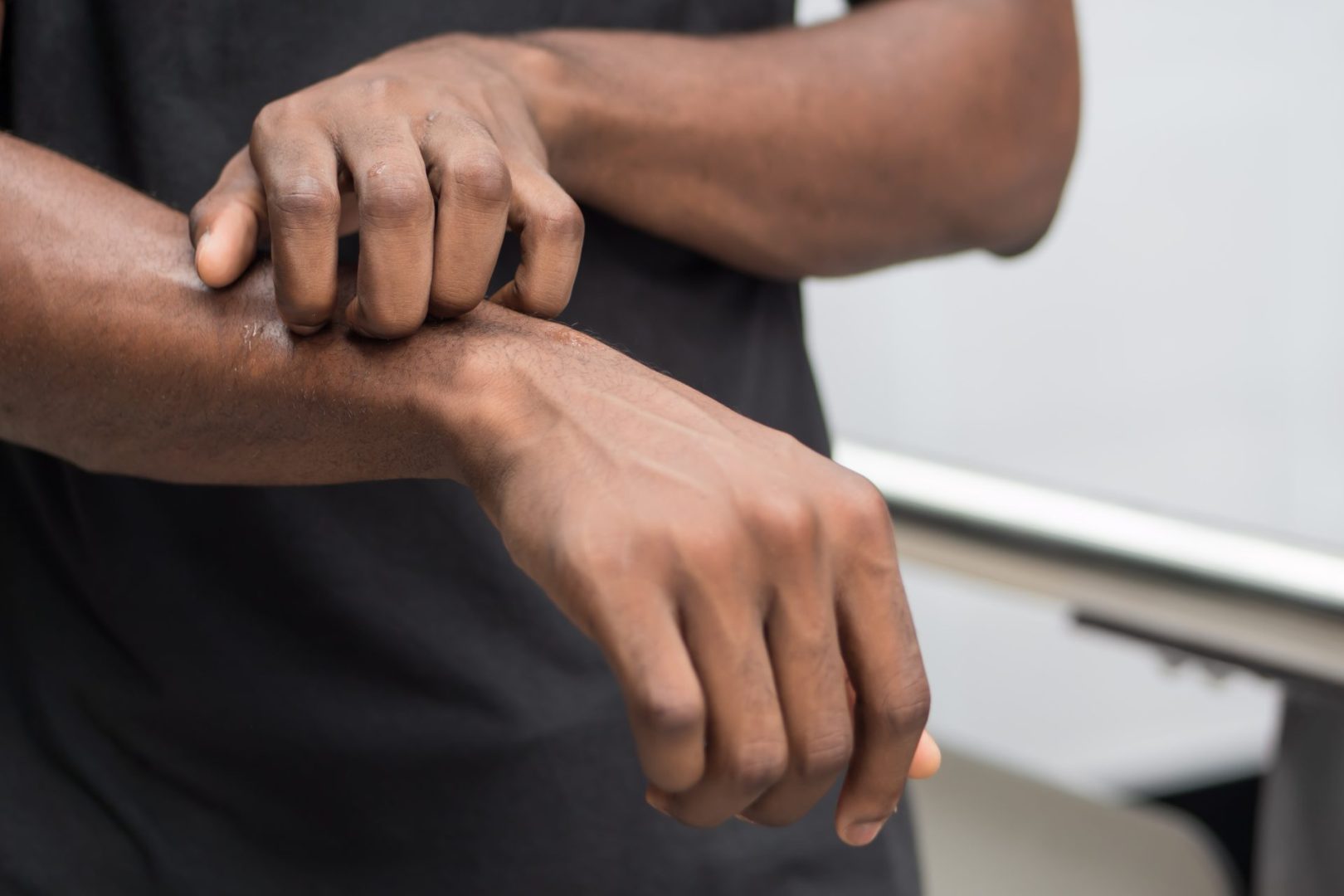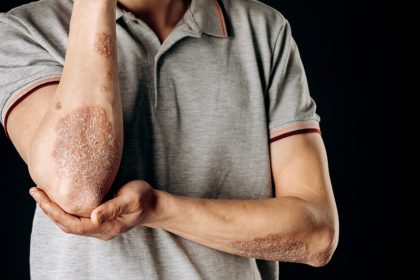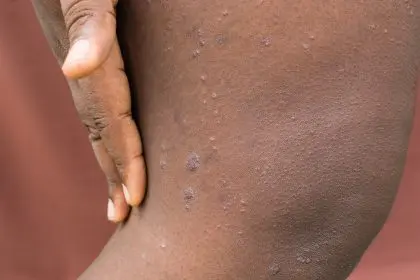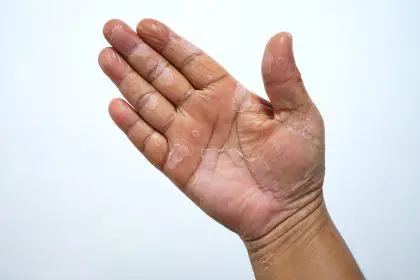Ringworm has nothing to do with worms, despite its misleading name that has confused people for generations. This common fungal infection affects millions of people worldwide, creating characteristic circular, scaly patches on the skin that can appear anywhere on the body. The infection’s deceptive name comes from its distinctive ring-shaped appearance, which early observers mistakenly attributed to parasitic worms burrowing under the skin.
The reality of ringworm is both more mundane and more concerning than its dramatic name suggests. This highly contagious fungal infection spreads easily through direct contact, contaminated surfaces, and shared personal items. Children are particularly vulnerable due to their close contact with peers in schools, daycare centers, and sports activities, making ringworm a common concern for parents and caregivers.
Understanding ringworm becomes crucial for protecting your family’s health and preventing its spread. The infection can affect anyone regardless of age, hygiene habits, or socioeconomic status. While generally not serious, ringworm can cause significant discomfort, social embarrassment, and complications if left untreated. The persistent nature of fungal infections means that inadequate treatment often leads to recurrence and continued transmission.
The fungi responsible for ringworm are remarkably resilient and adaptable, capable of surviving on surfaces for extended periods and thriving in warm, moist environments. These characteristics make prevention challenging and highlight the importance of understanding how the infection spreads, what symptoms to watch for, and how to effectively eliminate it once it appears.
Modern lifestyles often create ideal conditions for ringworm transmission. Shared facilities like gyms, swimming pools, locker rooms, and public showers provide perfect breeding grounds for the fungi. Additionally, the increasing popularity of contact sports, pet ownership, and communal living arrangements creates multiple pathways for infection spread within families and communities.
Fact number 1: Ringworm isn’t caused by worms at all
The confusion surrounding ringworm’s name reflects a historical misunderstanding that persists today. Ringworm is actually caused by a group of fungi called dermatophytes, which specifically target the keratin found in skin, hair, and nails. These microscopic organisms feed on the dead protein tissues in these areas, creating the characteristic symptoms associated with the infection.
Dermatophytes represent a specialized group of fungi that have evolved specifically to infect and colonize human and animal skin. Unlike other fungi that typically grow on decaying organic matter, dermatophytes have developed unique enzymes that allow them to break down and digest keratin, the tough protein that forms the outer layer of skin and hair. This specialization makes them particularly effective at establishing persistent infections.
The most common dermatophytes responsible for human ringworm infections include several species that have adapted to different environmental niches. Some species primarily infect humans and spread through person-to-person contact, while others naturally live in soil and occasionally infect humans who come into contact with contaminated earth. Still others primarily infect animals but can jump to human hosts through direct contact with infected pets or livestock.
These fungal organisms reproduce by producing microscopic spores that can survive harsh environmental conditions for months or even years. The spores are incredibly small and lightweight, allowing them to become airborne and settle on surfaces throughout an infected person’s environment. Once the spores encounter suitable conditions – warmth, moisture, and a keratin-rich surface – they germinate and begin the infection process.
The resilience of dermatophyte spores explains why ringworm infections can be so persistent and why thorough environmental decontamination is essential for preventing reinfection. Standard cleaning methods may not eliminate all spores, and infected individuals can unknowingly reintroduce the infection by coming into contact with contaminated items long after they appear to have recovered.
Fact number 2: The telltale ring isn’t always present
While the circular, ring-like appearance gives ringworm its distinctive name, this characteristic pattern doesn’t always develop, leading to frequent misdiagnosis and delayed treatment. The classic presentation features a red, scaly border that forms a circle around clearer-looking skin in the center, creating the appearance of a ring. However, many ringworm infections present as irregular patches, scattered spots, or diffuse scaling that lacks the typical circular pattern.
The variation in appearance depends on several factors including the specific fungal species involved, the location of the infection on the body, and individual immune responses. Infections on the scalp, for instance, often appear as areas of hair loss with scaling rather than distinct rings. Facial infections may present as red, scaly patches that resemble eczema or other common skin conditions.
In some cases, multiple ringworm lesions can merge together, creating large, irregular patches that bear no resemblance to the classic ring shape. This coalescence is particularly common in individuals with compromised immune systems or those who have delayed seeking treatment. The merged lesions can cover significant areas of skin and may be mistaken for other inflammatory skin conditions.
The inflammatory response varies significantly between individuals, with some people developing highly visible, red, raised lesions while others experience subtle scaling with minimal redness. Children often develop more pronounced inflammatory responses, while adults may have more subtle presentations that are easily overlooked or attributed to dry skin or minor irritation.
Environmental factors also influence the appearance of ringworm lesions. Infections in areas that remain moist, such as between toes or in skin folds, may appear as white, soggy patches rather than the typical scaly rings. Conversely, infections in dry areas may present primarily as scaling and flaking with minimal redness or circular pattern.
Fact number 3: Your beloved pets can be silent carriers
Pets represent one of the most common and overlooked sources of ringworm transmission in households. Dogs, cats, rabbits, hamsters, and other furry companions can harbor ringworm fungi without showing obvious symptoms, making them silent spreaders of the infection. This asymptomatic carriage means that apparently healthy pets can continuously reinfect family members despite ongoing treatment efforts.
Cats are particularly notorious for carrying ringworm without obvious symptoms. Feline carriers may have subtle hair loss, slight scaling, or small bald patches that owners easily overlook or attribute to normal grooming behaviors. Young cats, elderly cats, and those with compromised immune systems are more likely to develop visible symptoms, but many adult cats can carry and transmit the infection while appearing completely healthy.
Dogs typically show more obvious signs of ringworm infection, including circular patches of hair loss, scaling, and sometimes secondary bacterial infections that cause additional inflammation. However, some dogs, particularly those with thick coats, may have subtle lesions that are difficult to detect during routine grooming or petting. The infection can spread rapidly through a dog’s coat, especially in humid conditions or if the animal has underlying skin conditions.
Small pets like hamsters, guinea pigs, and rabbits can also carry ringworm, often without obvious symptoms. These animals are frequently handled by children, creating ideal conditions for transmission. The close contact involved in caring for small pets, combined with children’s developing hygiene habits, makes pet-to-child transmission particularly common.
Farm animals including horses, cattle, and goats represent another significant source of ringworm exposure, particularly for families involved in agricultural activities or those who visit petting zoos and farms. These animals can carry species of dermatophytes that readily infect humans and may cause more severe or persistent infections than those typically acquired from other humans.
Fact number 4: Common locations reveal infection patterns
Ringworm infections don’t occur randomly across the body but tend to favor specific locations that provide optimal conditions for fungal growth. Understanding these preferred sites helps with early recognition and explains why certain areas require special attention during treatment and prevention efforts. The fungi that cause ringworm thrive in warm, moist environments, making certain body areas particularly vulnerable.
The scalp represents one of the most common and concerning locations for ringworm infection, particularly in children. Scalp ringworm, known medically as tinea capitis, often begins as small, scaly patches that gradually expand and cause hair loss. The infected hairs become brittle and break off at the skin surface, leaving behind stubble or completely bald patches. This type of infection is highly contagious and can spread rapidly through schools and daycare centers.
Feet provide another ideal environment for ringworm growth, with the infection commonly affecting the spaces between toes and the soles of the feet. The warm, moist conditions inside shoes, particularly athletic footwear, create perfect conditions for fungal proliferation. Foot ringworm often presents as scaling, cracking, and itching between the toes, and can easily spread to other family members through shared bathroom facilities.
The groin area is susceptible to ringworm infection due to the warm, moist conditions created by tight clothing and natural body heat. This type of infection, often called jock itch, typically affects the inner thighs and groin creases, causing red, itchy, and sometimes painful lesions. The infection can be particularly uncomfortable and embarrassing, leading some individuals to delay seeking treatment.
Body ringworm can occur anywhere on the trunk, arms, or legs, often appearing as the classic circular lesions that give the infection its name. These infections frequently result from contact with infected animals or contaminated surfaces and may be less symptomatic than infections in other locations. However, body ringworm can spread extensively if not treated promptly, particularly in individuals with compromised immune systems.
Fact number 5: Transmission happens in surprising ways
The spread of ringworm occurs through multiple pathways that extend far beyond direct skin-to-skin contact, making prevention challenging and explaining why infections can appear seemingly out of nowhere. Understanding these various transmission routes is crucial for effective prevention and helps explain why some individuals develop ringworm despite maintaining good personal hygiene.
Direct contact with infected individuals represents the most obvious transmission route, but this contact doesn’t require prolonged or intimate interaction. Brief skin contact during sports, casual touching, or even sharing high-fives can transfer fungal spores from one person to another. The highly contagious nature of ringworm means that minimal contact can result in infection, particularly if the receiving individual has minor skin breaks or compromised skin barriers.
Contaminated surfaces serve as reservoirs for ringworm spores that can remain viable for extended periods. Gym equipment, yoga mats, locker room benches, pool decks, and shower floors commonly harbor fungal spores from infected individuals. The microscopic spores can survive on these surfaces for months, waiting for the next susceptible person to make contact. Even surfaces that appear clean may harbor infectious spores that are invisible to the naked eye.
Shared personal items represent another significant transmission route that often goes unrecognized. Towels, clothing, bedding, hairbrushes, combs, hats, and shoes can all harbor fungal spores and transmit infection to new users. Family members frequently share these items without considering the infection risk, leading to household outbreaks that can be difficult to control. The spores can survive washing in cool water and may require special treatment to eliminate completely.
Airborne transmission, while less common, can occur in environments with high fungal loads. Hair salons, barber shops, and animal grooming facilities may have airborne spores that can settle on skin or be inhaled. While inhalation rarely leads to infection, spores that settle on skin can establish new infections if conditions are favorable.
Soil contamination represents an often-overlooked transmission source, particularly for individuals who work with earth or enjoy gardening. Certain dermatophyte species naturally live in soil and can infect humans who handle contaminated earth without protective gloves. This route of transmission is more common in tropical and subtropical regions where soil fungal loads tend to be higher.
Fact number 6: Symptoms extend beyond visible skin changes
While the visible signs of ringworm receive the most attention, the infection often produces additional symptoms that can significantly impact quality of life and daily activities. These accompanying symptoms help distinguish ringworm from other skin conditions and provide important clues about the severity and extent of the infection.
Itching represents the most common and bothersome symptom associated with ringworm infections. The intensity of itching can range from mild irritation to severe, uncontrollable urges to scratch that interfere with sleep and daily activities. The itching typically becomes more intense as the infection progresses and may persist for some time even after treatment begins. Nighttime itching is particularly common and can lead to sleep disruption and secondary bacterial infections from excessive scratching.
Burning and stinging sensations often accompany ringworm infections, particularly in areas where the skin is thin or sensitive. These sensations may be constant or may occur primarily when the affected area comes into contact with water, soap, or clothing. The burning sensation can be particularly intense during bathing or when applying topical treatments, sometimes discouraging individuals from maintaining proper hygiene or adhering to treatment regimens.
Hair loss occurs with scalp and body hair infections and can be one of the most distressing aspects of ringworm for many individuals. The hair loss may be gradual or sudden, depending on the specific fungal species and individual immune response. In some cases, the hair breaks off at the surface, leaving stubble, while in others, the hair falls out completely, leaving smooth, bald patches. Hair regrowth typically occurs after successful treatment, but this process can take several months.
Secondary bacterial infections frequently develop as a complication of ringworm, particularly when scratching damages the skin barrier. These bacterial superinfections can cause additional symptoms including increased redness, swelling, warmth, and sometimes pus formation. The presence of secondary bacterial infection can complicate treatment and may require antibiotic therapy in addition to antifungal medications.
Psychological impacts, while not directly caused by the fungus, represent significant symptoms that affect many individuals with ringworm. The visible nature of the infection, combined with its contagious reputation, can lead to social isolation, embarrassment, and anxiety. Children may be excluded from school activities, while adults may avoid social situations or intimate relationships until the infection resolves.
Fact number 7: Treatment success requires comprehensive strategies
Effective ringworm treatment extends far beyond simply applying antifungal medications to visible lesions. Successful elimination of the infection requires a multi-faceted approach that addresses the fungal organism, prevents reinfection, and manages the environmental factors that contributed to the initial infection. This comprehensive strategy is essential because incomplete treatment often leads to recurrence and continued transmission.
Topical antifungal medications form the foundation of most ringworm treatment regimens, but their effectiveness depends on proper application and adequate treatment duration. Many individuals make the mistake of discontinuing treatment as soon as visible symptoms improve, not realizing that the fungal infection extends beyond the visible lesion borders. Effective treatment requires continuing medication for several weeks after symptoms resolve to ensure complete elimination of the fungus.
The choice of antifungal medication depends on the location and severity of the infection. Over-the-counter options may be sufficient for mild body infections, while prescription medications are often necessary for scalp infections, extensive infections, or infections that don’t respond to initial treatment. Some antifungal medications are more effective against certain fungal species, making proper diagnosis important for treatment selection.
Environmental decontamination represents a critical but often overlooked component of ringworm treatment. Fungal spores can survive on clothing, bedding, brushes, and household surfaces for extended periods, serving as sources of reinfection even after the initial infection appears resolved. Thorough cleaning and disinfection of the infected individual’s environment is essential for preventing recurrence.
Personal hygiene modifications during treatment help prevent spread to other body areas and reduce the overall fungal load. Daily bathing with antifungal soap, frequent clothing changes, and meticulous hand hygiene after touching infected areas all contribute to treatment success. However, these measures must be balanced against the risk of over-cleansing, which can damage the skin barrier and potentially worsen the infection.
Lifestyle modifications may be necessary to address the underlying factors that contributed to the infection. This might include changing exercise routines to avoid reexposure in gym environments, modifying footwear choices to reduce moisture retention, or adjusting personal habits that create favorable conditions for fungal growth.
Fact number 8: Prevention strategies protect entire households
Preventing ringworm requires understanding that the infection doesn’t exist in isolation but rather thrives in environments and behaviors that can affect entire households. Effective prevention strategies must address not only individual risk factors but also the shared spaces, items, and activities that create opportunities for transmission between family members, pets, and visitors.
Personal protective measures form the foundation of ringworm prevention but require consistent implementation to be effective. Daily hygiene practices including thorough bathing, complete drying of skin folds and between toes, and regular laundering of clothing and bedding help reduce fungal loads and prevent infection establishment. However, these measures must be practiced by all household members to be truly effective.
Environmental management involves identifying and addressing the conditions that promote fungal growth and survival. This includes maintaining low humidity levels in living spaces, ensuring adequate ventilation in bathrooms and other moist areas, and regularly cleaning and disinfecting shared surfaces. Special attention should be paid to areas where family members walk barefoot, such as bathrooms, laundry rooms, and poolside areas.
Pet health management represents a crucial but often neglected aspect of household ringworm prevention. Regular veterinary examinations can identify asymptomatic infections in pets before they spread to human family members. Maintaining good pet hygiene, including regular grooming and bathing, helps reduce the fungal load on pet hair and skin. Additionally, limiting pets’ access to certain areas of the home, particularly bedrooms and furniture, can reduce transmission opportunities.
Activity modifications may be necessary for families with high exposure risks. This might include avoiding shared personal items like towels and clothing, using protective footwear in public shower facilities, and implementing enhanced hygiene measures after participation in high-risk activities like contact sports or visits to animal facilities.
Education and awareness ensure that all family members understand the infection risks and prevention strategies. Children, in particular, need age-appropriate education about why they shouldn’t share certain personal items and why proper hygiene is important. This education should extend to recognizing early symptoms so that treatment can begin promptly if infection occurs.
Regular health monitoring allows for early detection of infections before they become extensive or spread to other family members. This includes routine self-examinations of skin and scalp, particularly after known exposures or in individuals with high-risk activities. Prompt medical evaluation of suspicious skin changes can prevent minor infections from becoming major problems.
Understanding ringworm’s true nature – as a persistent fungal infection rather than a parasitic worm – empowers individuals and families to take appropriate prevention and treatment measures. The infection’s contagious nature and environmental persistence mean that half-measures are often ineffective, while comprehensive approaches that address all aspects of the infection typically result in successful elimination and prevention of recurrence. By recognizing the facts about ringworm transmission, symptoms, and management, families can protect themselves while avoiding the fear and misconceptions that often surround this common but manageable condition.















